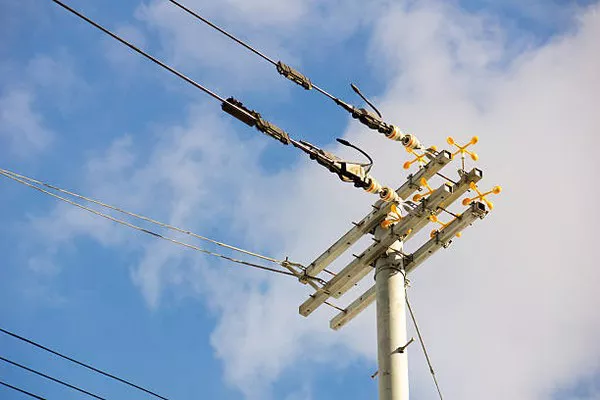Silica gel, commonly used as a desiccant in transformers, plays a crucial role in maintaining the insulation integrity and performance of these electrical devices. Its ability to absorb moisture helps prevent the formation of harmful byproducts such as acids and sludge, which can degrade transformer insulation and compromise efficiency. However, the effectiveness of silica gel diminishes over time, necessitating periodic replacement to ensure optimal transformer operation. In this article, we delve into the importance of replacing silica gel in transformers and discuss the key factors that determine the replacement intervals.
Why Silica Gel Replacement Matters
Transformers are vital components in electrical power systems, facilitating the transmission and distribution of electricity. The insulation system within transformers is critical for ensuring the safety and reliability of electrical networks. Moisture, if allowed to accumulate within the transformer, can lead to insulation breakdown, corrosion of conductors, and ultimately, transformer failure. Silica gel serves as a moisture-absorbing agent, maintaining the internal environment of the transformer at an optimal moisture level and preventing these detrimental effects.
Factors Influencing Silica Gel Replacement
Several factors influence the rate at which silica gel becomes saturated and requires replacement:
Operating Environment: Transformers installed in humid or coastal regions are more prone to moisture ingress, accelerating the saturation of silica gel. Additionally, environmental factors such as temperature fluctuations can impact the rate of moisture absorption.
Transformer Design and Size: The size and design of the transformer dictate the volume of insulating oil and, consequently, the amount of moisture that can be absorbed. Larger transformers typically contain more silica gel and may have longer replacement intervals compared to smaller units.
Transformer Age: As transformers age, their insulation properties may degrade, leading to increased moisture ingress and faster silica gel saturation. Older transformers may require more frequent silica gel replacement to maintain optimal performance.
Operating Load: Transformers operating at higher loads generate more heat, which can accelerate the aging of insulation materials and increase moisture levels within the unit. Transformers subjected to heavy loads may require more frequent silica gel replacement to mitigate the effects of moisture.
Maintenance Practices: Regular maintenance, including oil sampling and analysis, allows for the early detection of moisture ingress and silica gel saturation. Timely maintenance can help extend the lifespan of silica gel and minimize the risk of transformer failure.
Signs of Silica Gel Saturation
Monitoring the condition of silica gel is essential for ensuring the effective operation of transformers. Several indicators suggest that silica gel may be saturated and in need of replacement:
Change in Color: Silica gel typically changes color from blue or orange to pink or white as it absorbs moisture. Visual inspection of silica gel color can provide a rough estimate of its saturation level.
Increase in Transformer Temperature: Saturation of silica gel can lead to increased moisture levels within the transformer, resulting in elevated temperatures during operation. Monitoring temperature variations can help identify potential issues related to moisture ingress.
Oil Analysis Results: Regular oil sampling and analysis can detect changes in moisture content and identify any degradation products resulting from moisture-induced insulation breakdown. An increase in water content or the presence of acidic byproducts may indicate silica gel saturation.
Visual Inspection of Transformer Components: Signs of corrosion, sludge formation, or deterioration of insulation materials within the transformer may indicate prolonged exposure to moisture. These visual cues highlight the importance of maintaining optimal moisture levels through silica gel replacement.
Recommended Replacement Intervals
Determining the appropriate replacement interval for silica gel in transformers involves a combination of factors, including operating conditions, manufacturer recommendations, and maintenance practices. While there is no universal timeframe for silica gel replacement, the following guidelines can help establish a proactive maintenance schedule:
Manufacturer Recommendations: Consult the transformer manufacturer’s guidelines and specifications for recommendations regarding silica gel replacement intervals. Manufacturers often provide general guidelines based on transformer size, design, and operating conditions.
Condition-Based Maintenance: Implement a condition-based maintenance approach that incorporates regular oil sampling and analysis to monitor moisture levels and silica gel condition. Based on oil analysis results and visual inspection findings, adjust the replacement interval as needed to ensure optimal transformer performance.
Environmental Factors: Consider the operating environment and environmental conditions when determining replacement intervals. Transformers installed in harsh or high-humidity environments may require more frequent silica gel replacement to counteract moisture ingress.
Historical Data: Analyze historical maintenance records and performance data to identify trends related to silica gel saturation and determine an appropriate replacement interval. Historical data can provide valuable insights into the specific operating conditions and maintenance requirements of the transformer.
Expert Consultation: Engage with qualified transformer maintenance professionals or consultants to assess the specific requirements of your transformer and develop a customized maintenance plan. Experienced professionals can offer valuable insights and recommendations based on industry best practices and their expertise.
See also What Is Current Transformer And Voltage Transformer
Conclusion
Silica gel plays a crucial role in maintaining the insulation integrity and performance of transformers by absorbing moisture and preventing harmful effects such as insulation breakdown and corrosion. Regular replacement of silica gel is essential to ensure optimal transformer operation and mitigate the risk of failure. By considering factors such as operating environment, transformer design, and maintenance practices, stakeholders can establish proactive maintenance schedules that prioritize silica gel replacement as part of a comprehensive transformer maintenance strategy. Ultimately, proactive maintenance and timely replacement of silica gel contribute to the longevity, reliability, and efficiency of transformers in electrical power systems.

